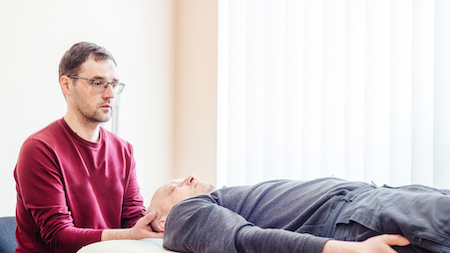Exploring The Science Behind Craniosacral Therapy

Craniosacral therapy is a form of alternative medicine subject to much curiosity and debate over the years. Born out of osteopathy, experts claim it assists in various health conditions. More than just a massage, craniosacral therapy is based on manipulating the craniosacral system.
But how well-established is the science behind these claims? While some critics dismiss craniosacral therapy as pseudoscience, a growing body of evidence supports its effectiveness. Here, we will explore the science behind craniosacral therapy and its potential benefits.
What is Craniosacral Therapy?
Craniosacral therapy is a gentle approach that aims to improve fluid movement and cranial bone motion by applying light touch to the face, spine, and pelvis. The therapy operates on the belief that these actions can balance the flow of cerebrospinal fluid — a clear, colorless body fluid surrounding the brain and spinal cord — thus, enhancing our health.
To understand craniosacral therapy, we should understand the structure of the craniosacral system. It is an interconnected system of membranes and cerebrospinal fluid. The craniosacral rhythm refers to the subtle pulsations and movements of the cranial bones, spine, and sacrum.
When the body is at optimum health, this rhythm is regular and balanced. However, stress or illness could disrupt this rhythm. Craniosacral therapy aims to restore balance, promoting the body’s natural healing processes.
The Science Behind Craniosacral Therapy
Several studies have been conducted on craniosacral therapy over the years, though it remains a heavily debated field. The therapy’s noninvasive and gentle nature allows clinicians to use it as an adjunct to standard treatments for varying health conditions.
A controlled trial of craniosacral therapy for migraines highlighted the therapy’s potential in managing migraines. The study showcased decreased migraine frequency and intensity and improved overall quality of life.
Similarly, the effect of craniosacral therapy on lower urinary tract signs and symptoms in multiple sclerosis demonstrated noteworthy improvement in MS patients’ urinary symptoms, a common issue among those with the disease.
Application of Craniosacral Therapy
There are two sides to the science behind craniosacral therapy. However, research in recent years has shed light on its potential mechanisms and effects. Here are some applications of craniosacral therapy:
- Regulation of Autonomic Nervous System: Research suggests that craniosacral therapy can modulate the autonomic nervous system, helping to balance the sympathetic and parasympathetic branches. This may reduce stress, improve relaxation, and enhance overall well-being.
- Pain Management: Studies have shown that craniosacral therapy may effectively manage chronic pain, including fibromyalgia, migraines, and temporomandibular joint disorders. It is believed that the therapy’s influence on the central nervous system helps reduce pain signals and promotes the release of endorphins, the body’s natural painkillers.
- Relief from Stress and Anxiety: Craniosacral therapy has decreased stress and anxiety levels in various populations, including individuals with post-traumatic stress disorder. The gentle touch and deep relaxation induced during sessions may help activate the body’s relaxation response, reducing stress’s physiological and psychological effects.
Are There Side Effects?
Like any therapeutic intervention, craniosacral therapy may have potential side effects. Some possible side effects of CST include:
- Fatigue: It is common for individuals to feel tired after a CST session. This might result from the body entering a deep state of relaxation during the treatment.
- Soreness or tenderness: The gentle manipulations used in CST can occasionally lead to soreness or tenderness in the treated areas. This discomfort is typically mild and temporary.
- Risk of injury: Although craniosacral therapy is generally considered safe when performed by a trained practitioner, there is a potential risk of injury if the therapist applies excessive force or inappropriately manipulates the head and neck. Choosing a qualified and experienced practitioner to minimize this risk is important.
The Bottom Line
Despite the critics, many still turn to craniosacral therapy as a complementary treatment option. It also attracts those who desire less invasive or drug-free options. Additionally, its focus on the mind and body connection aligns with the current shift towards holistic and integrated health practices.
However, it’s fundamentally important to approach health and well-being critically and scientifically, seeking evidence-based treatments. While the science behind craniosacral therapy may still be in exploration, the promise it shows in some studies denotes it is worthy of further investigation.


Leave a Reply
You must be logged in to post a comment.